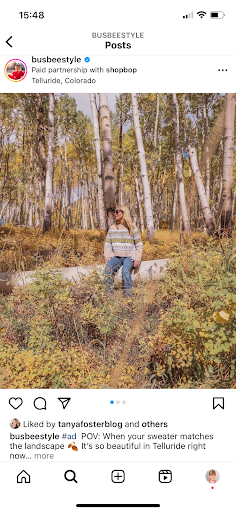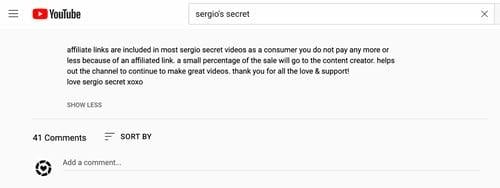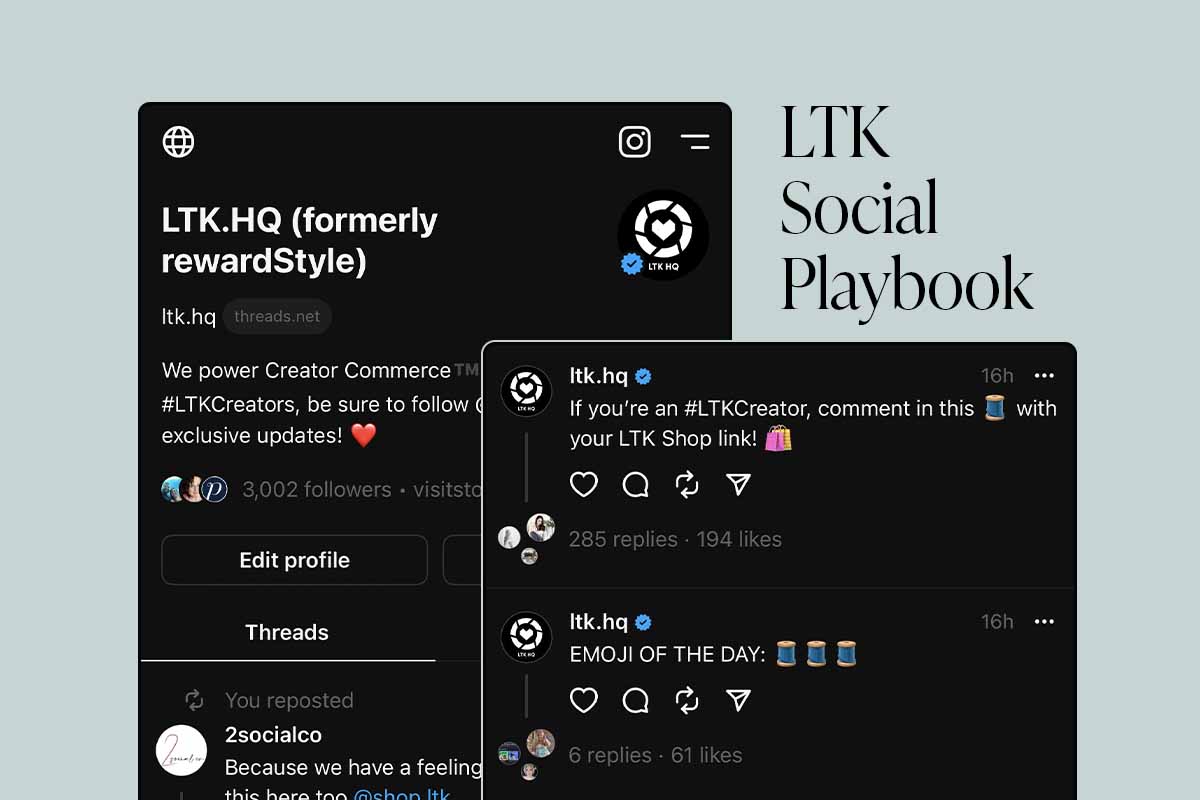It only takes a few easy steps to keep your LTK content FTC compliant.
As Creator and brand relationships continue to evolve across web and social platforms, it is important to keep up to date on best practices for following the Federal Trade Commission (FTC) Endorsement Guidelines. The FTC is a US agency that monitors advertising in all media forms, including social media, to ensure that endorsements are honest and not misleading. The FTC can fine Creators who don’t follow these rules. We don’t want that to happen, so we’ve put together a rundown of best practices to keep your LTK content FTC compliant.
When do these practices apply?
The FTC rules apply whenever you have a relationship with the brand behind a product you post about. This includes when you earn commission or collaboration payments for posts, when you receive free products or access to brand experiences in exchange for a post, and if you have friendship, family, or employment relationships that may impact your views of brands and the products they sell.
What is an endorsement?
Endorsements include posting a commissionable or paid link, recommending a product in your posts, or merely tagging a brand’s products. The FTC considers all of these actions as signaling your approval of the product.
Be transparent
- Use the LTK Creator app, LTK posts created in the app have disclosures built in. However, your responsibility to properly share adequate disclosures does not end here.
- Sponsored links (Links used in connection with direct brand relationships, ie a campaign post or when you receive gifted product)
-
- Clearly disclose when you have a financial or family relationship with a brand, or when you receive a benefit from a brand.
- In each post, we recommend that you use #Ad
- In each post, we recommend that you use #Ad
- Clearly disclose when you have a financial or family relationship with a brand, or when you receive a benefit from a brand.
-
- LTK links: Disclose that you could earn a commission on direct-to-retailer LTK links by using the hashtag #paidlink
DON’T:
- Assume your followers know about all your brand relationships
- Assume disclosure built into social media platforms are sufficient, such as Instagram’s paid partnership notice
- Use ambiguous disclosures like #thanks, #spon, #sp, #collab or #ambassador
- Rely on disclosures that people will only see if they click “more"
- Do not represent that you are a current or recent user of a product or service if it is not the case
Be honest and accurate
- Make sure that any opinions you express about a product or brand are honest and your own, and a typical consumer experience. (Don’t imply atypical results.)
- Examples of what is OK
- “Here are some of my skin care favs”
- “I have been using this product for X period of time and I love how my skin looks.
- "This worked really well on my skin. If you try it, let me know if it has the same effect on you."
- "My skin loves this product. I hope yours does too."
- Examples of what is NOT OK
- "Trust me, use this product for one week and you will see X results ."
- "Skip the face lift, this product smoothed out all of my wrinkles in two weeks!"
- All statements and claims should be accurate and substantiated.
- Unless the brand has given you specific guidance (or it is stated on the packaging), it’s best to avoid making claims that a product is:
- All natural, contains natural ingredients
- Made in the USA
- Cruelty-free
- Eliminates or reduces wrinkles/tightens skin
- Has an anti-aging effect
- Green, sustainable, or environmentally friendly
- Instead you can say: "Brand says that their product is X/does X, Check out their site for more details."
- Unless the brand has given you specific guidance (or it is stated on the packaging), it’s best to avoid making claims that a product is:
- Do not provide an opinion, endorsement, or review for a product or a product feature if you have not tried the product or feature yourself.
- Consistency is key, so make sure you always use these practices as you post.
Don't: Represent that you are a current or recent user of a product or service if it is not the case.
Use clear and prominent disclosures
- Disclosures should be clearly visible and easy to read and understand across all platforms and screen sizes.
- The disclosure should be in language that the intended audience can easily understand.

- Ensure your disclosure is clear and evident so that the consumer will notice it. This means it should ideally appear in the first line of text.
- For Instagram that means it must be visible without needing to be expanded (“above the fold”). Ideally disclosures should be up front in each post, before any copy, photos, or links.
- On image-only platforms without captions like Instagram Stories, it is recommended to superimpose disclosures over the images or video. You should ensure that your disclosures carry over across mediums when sharing a post (e.g., when you share a TikTok video in an X post, the tweet should also contain a disclosure).
- See the chart below for platform-specific disclosure guidance.
- Ideally any hashtag/short-form disclosure should be separate from all other hashtags and should not be buried or included in a string of hashtags.
- Do not require additional action to see the disclosure, such as clicking “more,” scrolling, or placing the disclosure on a busy screen or moving background where it may be difficult to see.
- When promoting products on video, the disclosures may be given verbally if the endorsement is only provided verbally in your video content. If the endorsement is also in a video post’s caption, then add #Ad in your caption copy as well. Best practices for video are to:
- Disclose verbally
- Add text overlays with #Ad and/or #paidlink if linking direct to the retailer at the beginning of sponsored videos
- Add #Ad in the video caption if one exists
- The FTC has indicated that the following disclosures are not clear enough:
- “Thank you” on its own
- “[Brand] asked me to try” isn’t enough if the brand paid you
- “#sp”
- “#spon”
- “#collab”
- “Ambassador or #Ambassador”
- Saying you got “early access” if you also got paid
- Saying you got a product/service for free if the company also had input into exactly what you would say
- Including a disclosure in a bio, or background, or using a single disclaimer when making multiple endorsements
Don't:
- Rely on disclosures that people will only see if they click “more.”
- Assume disclosure built into social media platforms are sufficient, such as Instagram’s paid partnership notice.
Disclosure options
*The following guidance provides a sampling of good disclosures
| Platform | Placement |
| Facebook & Twitter (when the opinion given is in the post copy rather than the photo) |
|
| Instagram (when the opinion given is in the post copy rather than the photo) | 
|
|
Snapchat/Instagram Story |
|
|
|
| Blog |
|
| YouTube & other videos |
Disclosure should appear:
|
| Livestream |
|
| TikTok |
|
Enforcement
What could happen if I don’t follow the recommendations?
The FTC initiated and settled its first-ever complaint against two individual Creators in 2021. It has also issued more than 90 educational letters and additional warning letters to various Creators reminding them to clearly and conspicuously disclose relationships when they promote products or services. Brands are increasingly focused on ensuring that the Creators they work with are compliant. In fact, many top brands received a letter from the FTC in late 2021 around the FTC’s plans to monitor and enforce in this area. So compliance is not only a great way to protect yourself, it’s a best practice for your business and your partnerships.
Not following these recommendations also jeopardizes your relationship with LTK. We understand that this is a lot to digest and monitor, but we hope this guidance is clear. Failing to follow these recommendations could jeopardize our brand relationships and reflect poorly on LTK. Creators who ignore the recommendation may be suspended from the platform.
Where can I find out more?
For more information on FTC guidelines, click to read What People Are Asking, which explains more about endorsement disclosure rules.
DISCLAIMER: This information is for educational purposes only. This is not, nor is it intended to be, legal advice. If you have questions about your disclosure practices, then you should consult legal counsel.






